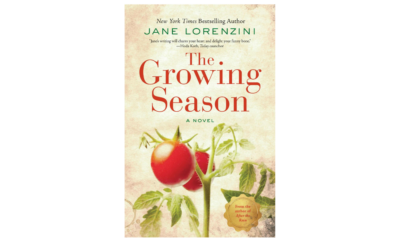Separating Perennials Can Encourage Healthier Growth and Give You More Plants
If you’re a gardener, you know plants are expensive! Luckily, you probably have tons of plants in your yard that can be divided, multiplying your options for your own garden and providing gifts to other gardeners.
In fact, some plants actually need you to divide them for them to flower optimally. Many perennials, including aster, bearded iris and Shasta daisy, can be divided every year to three years. Give daylilies three to five years, while lungwort and turtlehead can wait every five years or more. You’ll be able to tell if the time is now if there is starting to be a bald spot in the center of the plant (with new growth around it) or if the new growth is coming in sort of gangly. If you’re staking your plants a lot, it might be time to divide.
Most perennials can be divided any time, and spring is a good time to get going on summer bloomers so the new plants have all season to get used to their home.
See more: Best Plants for Spring Gardening

Photo credit: Jeff Adkins
Divide & Conquer
One exception is if you want to divide spring-flowering plants, wait until the blooms have faded in summer. You want to divide when the plant can then concentrate its energy on growing its roots, rather than flowering.
While it might be intimidating to think about splitting a plant in pieces, dividing is pretty simple, and once you start, the plant will guide you.
- To get started, pick an overcast day for the task, so that hot sun doesn’t beat down on plants in transition. (If that’s not possible, dig up in the sun, but then move to shade for the division.)
- Start by digging around and under the plant, keeping the root ball whole.
- Look at the roots. Many plants, such as hosta and lily of the valley, will have obvious spots where you can pull them apart into two to five separate plants. If you can’t pull gently with your hands, you can divide the roots with a sharp tool choosing to slice through natural clumps in the roots or rhizomes. Ensure each section has a good section of roots to help it grow well.
- Dig holes for your new plants, using a combination of the original native soil and amended soil. Depending on the plant, you may want to add fertilizer. You can also put sections in containers to take to plant swaps or to give to friends. If your friends are going to replant right away, the plants can go in a plastic bag or box, rather than being replanted in a container.
- Water as usual and enjoy your bounty.
See more: Spring Gardening Do’s and Don’ts
Simple Division on Separating Perennials
You shouldn’t need to buy any new equipment to master dividing. You’ll want a spade, shovel or pitchfork to dig up the existing plant. Often a pitchfork can be the best option, as you can reach under the roots at an angle and pop the plant out whole. You’ll still need a shovel for digging and replanting.
Many plants can be divided simply by pulling them apart, using force with your gloved hands. If that doesn’t work, use a sharp spade, knife or pruning shears to make a clean cut. It’s a good practice to clean off the knife after each use to prevent disease spread.
About the author: Margaret Littman is a freelance writer and a Master Gardener of Davidson County. For more free advice on gardening in the Volunteer State, check with the UT Extension office in your county.
















Good explanation on how to divide perennials. BUT you should mention that lily plants, especially day lilies, are toxic to cats: exposure to any part of the plant can cause sudden kidney failure and even neurological signs in cats. Ingesting just small pieces of the petals, leaves, or even the pollen or water in the vase can result in severe, potentially irreversible and fatal kidney failure.
Can peonies be divided when then grow too large and produce few blooms? If so, when? Would I let them bloom and then divide or divide now when they are just erupting from the ground?